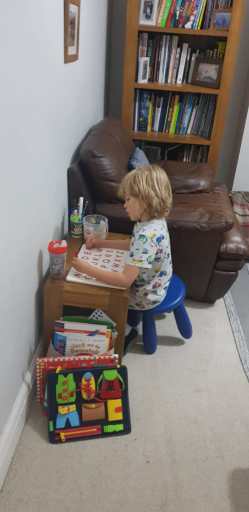When your child doesn’t speak, all you dream of is to hear their voice. To listen to what they have to say. To have them answer a question you so desperately want to ask.
When Rhys was three he had ten words. Those words were one, two, three, four, five, six, seven, eight, nine and ten.
Numbers were his world, and still are.
He loved flashcards, and would pile them up, holding them in his hand, a support blanket, counting their contents constantly. He would find the fancy educational cards that marketing companies had devised as the best mathematical toolkit for young children. He would find playing cards, and would count the number of spades, hearts, clubs and diamonds. Puzzle pieces would be collected into a pile, or little wooden toy tiles, or coins from a toy till and then shifted through and their totals determined.
I would sit next to him and watch as his finger moved touching each image on a card, his mouth speaking the number as he counted. Once finished he would take the next card from the back of the pack, bring it to the front and start his count once again.
Over time he started to tolerate me counting along with him. It took time, but often he would scream back at my interruption to his game.
I managed over time to allow him to take control of my finger, and instead of him touching each picture on the card, he would guide my hand to each object and count.
I was in. I had opened the door to his world.
Months passed, and cards continued to be Rhys’ passion. But I knew I had to find a way to pull him away from his numbers and introduce more words. Numbers were not going to help him request items or move forward to becoming more independent. Words had to have context and meaning.
By the age of four, I was constantly counting along with him, and decided to find a way to introduce the words for the images on the cards.
“One shoe” I said one day as Rhys placed my finger on the first image of a shoe on his number five card. As he heard my words, which now included something additional from the norm, he kicked off. He screamed but retained my finger on the first shoe image, waiting for the word associated with it, the word “one”. The word all by itself.
But I refused to back down. I repeated “One shoe” and then forced my finger to the second image next to it immediately stating, “Two shoes”. I thought that if he realised that we were still counting, and that the process was still the same, he might accept the change.
Rhys was not happy with the change, but I persevered, and over time he started to realise that we were still counting. My plan started to work.
From that point onwards, I used numbers in everything. When we were in the park, I would crouch down to his level, point and say “Look Rhys, three ducks. One duck, two ducks, three ducks” When I was dragged to the cupboard by my hand for food, I once again would crouch down and say “Rhys, one rice cake or two rice cakes” I would never get a response, but new words were being added to our engagement.
It took time, a long time, years in fact, but it worked. We started to get new words. But more importantly, Rhys’ engagement increased, he was becoming aware of other things in his environment. The numbers interested him and allowed him to count real world objects, outside of his world of flashcards.
We limit the use of flashcards now. They tend to close him off from the world, but yesterday while I was clearing out a drawer, Rhys found some old number puzzle cards which had been hidden months ago. He immediately shuffled through them, like he did years ago, and started to count the images.
This morning he sat next to me and took my finger in the same way he had done a few years ago, and looking at me said, “Count with me” As he placed my finger on the first picture, I said “One”. He paused and without moving my finger he look up at me, waiting.
That’s when I realised that I had done it wrong. I had not counted the little picture of the Seahorse.
“One seahorse” I corrected.
Rhys then moved my finger to the next seahorse, and looked up and me, full eye contact – the strong engagement we had worked on for so many years. “Two seahorses” I responded, his reward for his eye contact.
We have come so far. A game that we played so long ago, came back to show us the progress we have made. And that progress has been gigantic.
Things take time. Find your child’s obsession and use it. Add words to their interest. Use their excitement as a tool for engagement.
And don’t ever give up!
I didn’t!
🃏🃏🃏🃏🃏🃏🃏🃏🃏🃏🃏




